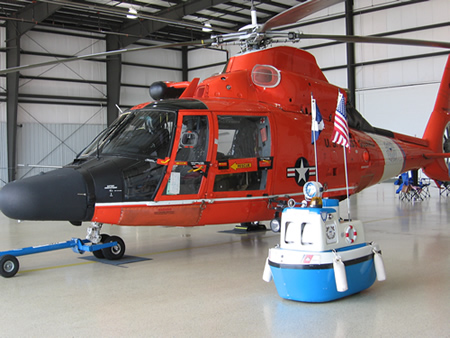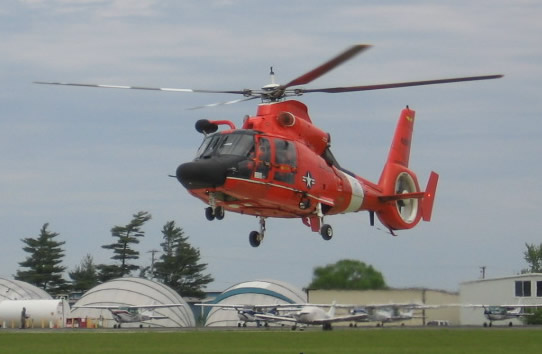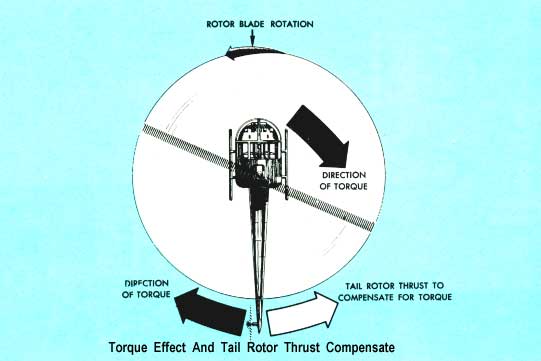

| MadSci Network: Engineering |
Dear Em:
Aren't helicopters wonderful machines?


I'm including pictures of a U.S. Coast Guard HH-65 Dolphin rescue helicopter. These are based at Traverse City, MI. and are temporarily based at Waukegan Airport during the summer.
As to simple machines: Most authorities list six: the Lever, Wheel,
Wedge, Inclined Plane, Screw and Pulley. Personally, I don't agree. A
screw is an inclined plane wrapped around a shaft, and a pulley is a
wheel with a groove in it, so I do not count those as separate
machines. An inclined plane works differently than a wedge, though, so
I keep those two separate. My list, therefore is: Wheel, Lever, Wedge,
Inclined plane, and Bearing.
http://www.thaitechnics.com/helicopter/heli_principle.html
Using this list, a helicopter uses many simple machines. The most
prominent is the tail boom. It is a lever that conveys the horizontal
force of the tail rotor to the cabin, to resist the rotational force
applied to the helicopter's cabin by the main rotor. 
If the helicopter is powered by an internal combustion engine, the crankshaft is a series of levers that rotate on bearings, while the valves are worked by levers. A gas-turbine engine is a series of wheels. Both types have to connect to a transmission, made up of gear- wheels.
The control linkages are mostly levers. I suppose you could say that the rotor blades are wedges, although they are actually long, thin narrow wings that create lift when the engine rotates them through the air. Finally, the landing gear are wheels.
New types of helicopters are being designed all the time. Maybe you will design the newest Coast Guard helicopter, and help save lives.
Try the links in the MadSci Library for more information on Engineering.